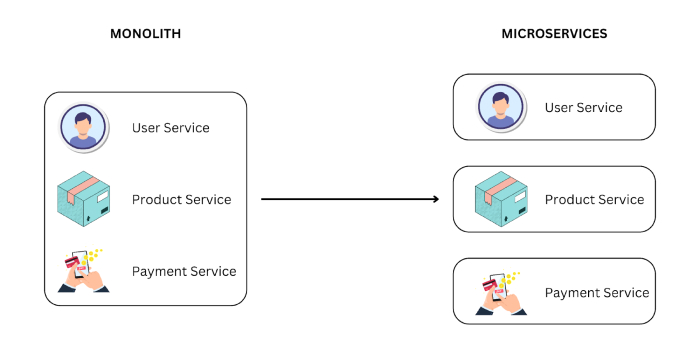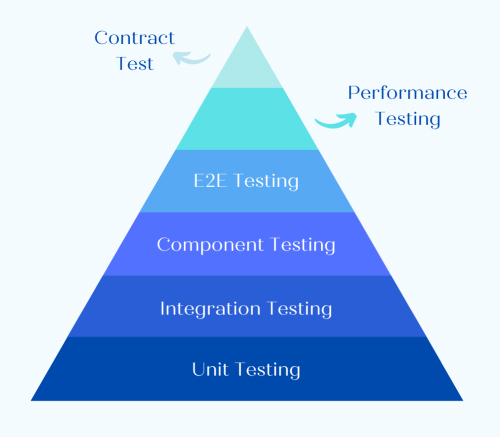Microservices Testing
## What is Microservice Testing?
Microservices architecture breaks the traditional monoliths into small, independent services that communicate via APIs. Each service handles a specific function and can be developed and deployed independently.
Microservice testing is the process of testing these individual microservices to ensure each service functions correctly and integrates seamlessly with others. This testing is critical in ensuring the general reliability and quality of a microservices-based system.
Importance of Microservices Testing
The microservices architecture brings many advantages to modern software development. However, it is not a silver bullet; it comes with a new set of challenges compared to traditional monolithic applications.
Hence, testing your microservices before releasing them into a production environment is essential. Here are four key reasons why microservices testing is important:
1. Ensures service functionality
First and foremost, you need to ensure each microservice is working as expected. This is pretty much similar to the purpose of usual functional testing. The only difference is that each microservice is designed to handle a single functionality. Testing individual microservices prevents individual service failures from affecting the entire application.
2. Validate inter-service communication
Microservices mainly use APIs to communicate with each other. Hence, testing the inter-service communication process is essential in microservices since the whole application depends on it. It helps you identify common issues like data mismatches, communication breakdowns, and protocol errors.
3. Maintains system performance
Scalability is one of the major advantages of microservices. So, you need to ensure your microservice design performs well under various conditions to get the maximum out of it. Performance testing allows you to identify bottlenecks and scalability issues early and optimize the application to handle high traffic volumes without degrading the user experience.
4. Reliability and fault tolerance
Error handling is another crucial part of microservices since an error in a single service can also affect other microservices. You need to use design patterns like the Saga pattern to ensure these errors are handled gracefully. Testing can be used to verify these error-handling mechanisms and ensure the system remains operational even when individual services fail.
Types of Microservice Testing
The process of microservice testing involves performing multiple test types at different stages of the software development life cycle:
- Unit test
- Integration test
- Component test
- End-to-End test
- Performance test
- Contract test
These test types can be organized in a pyramid hierarchy to define the order of execution where the simpler, faster tests should be at the base, while more complex, slower tests are higher up.
Please note that the names of these test types can change based on the interpretation used by various organizations.
1. Unit testing
Unit testing is conducted by developers on the smallest parts of the code to ensure they work as expected. Although it is the fastest and least expensive test type available, it provides a solid foundation for more complex tests.
Tools to implement
Example with JUnit to test the add function of a calculator:
import org.junit.jupiter.api.Test;
import static org.junit.jupiter.api.Assertions.assertEquals;
public class CalculatorTest {
@Testpublic void testAddition() {
Calculator calculator = new Calculator();
assertEquals(5, calculator.add(2, 3));
}
}
2. Integration testing
Integration testing is a bit more complex than unit testing. It involves testing interactions between microservices to ensure data flow and communications. For example, consider an e-commerce application with two microservices to handle orders and user accounts. Integration tests ensure that user data is correctly retrieved from the user service when an order is placed through the order service.
Tools to implement
3. Component testing
Component testing involves testing a single or group of microservices in isolation to verify their functionality. Although this sounds similar to integration testing, component testing focuses more on internal logic and behavior using mock or simulated resources.
Tools to implement:
4. End-to-End (E2E) testing
E2E testing involves testing the entire application’s workflows from start to end. It ensures the application works as expected from the user’s perspective. These tests are more complex and expensive to create as they require specialized domain knowledge and an environment similar to production.
Tools to implement:
5. Performance testing
Performance tests assess how well your microservices perform under expected and peak load conditions. Load, stress, and endurance testing fall under this category, and they help identify performance bottlenecks and scalability issues.
Tools to implement:
6. Contract testing
Contract testing ensures that microservice interactions adhere to predefined contracts. These contracts define the format and content of the requests and responses exchanged between services. The final purpose of contract testing is to ensure that services communicate correctly, preventing integration issues caused by mismatched expectations.
Tools to implement:
Challenges of Microservice Testing
- Complex dependencies and interactions: Managing and testing the dependencies between several microservices can be challenging. This becomes further complex when the services have interdependencies.
- Data consistency and integrity: In real-world scenarios, microservices often need to synchronize or share data across different data stores. So, you need to ensure data consistency and integrity across the system to ensure unexpected behaviors.
- Testing environment management: Test types that reside on the top of the test pyramid require environments similar to the production environment. So, you need to ensure all the server, database, and network configurations are identical in test and production environments. This could take a significant amount of effort and money.
- Performance and load testing: Conducting realistic performance and load tests is a resource-intensive and challenging task. In a real-world scenario, microservices will handle different loads based on their use. For example, a service like password reset might only get ten requests per day, while a service like product search gets 1000 requests per second. So, you need to design tests specifically for each service and make necessary adjustments.
Conclusion
Microservice testing is essential to ensure the functionality, reliability, and performance of an application built using a microservices architecture. It helps organizations address the unique challenges posed by microservices, producing more resilient and scalable applications with better user experience.



